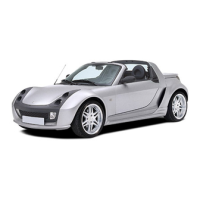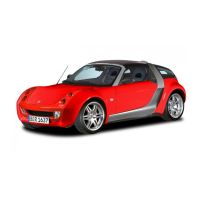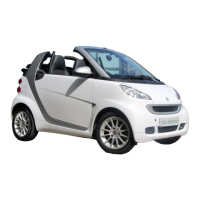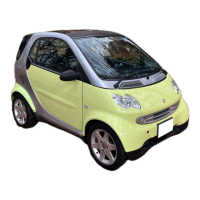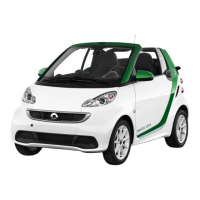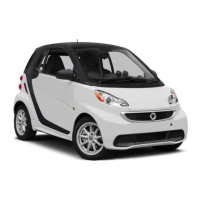You should have all work on electrical and
electronic components carried out at a
qualified specialist workshop.
G
WARNING
If you operate RF transmitters incorrectly
in the vehicle, the electromagnetic radia-
tion could interfere with the vehicle elec-
tronics, e.g.:
R
if the RF transmitter is not connected to
an exterior aerial
R
the exterior aerial has been fitted incor-
rectly or is not a low-reflection type
This could jeopardise the operating safety
of the vehicle. There is a risk of an accident.
Have the low-reflection exterior aerial fit-
ted at a qualified specialist workshop.
When operating RF transmitters in the
vehicle, always connect them to the low-
reflection exterior aerial.
!
Only have work carried out on the engine
electronics and its associated parts, such
as control units, sensors, actuating com-
ponents and connector leads, at a qualified
specialist workshop. Vehicle components
may otherwise wear more quickly and the
vehicle's operating permit may be invali-
dated.
!
The operating permit may be invalidated
if the instructions for installation and use
of RF transmitters are not observed.
In particular, the following conditions
must be complied with:
R
only approved wavebands may be used.
R
observe the maximum permissible out-
put in these wavebands.
R
only approved aerial positions may be
used.
Excessive levels of electromagnetic radia-
tion can cause damage to health. The use of
an exterior aerial takes into consideration
the scientific discussion surrounding the
possible health risk posed by electromag-
netic fields.
The following aerial positions may be used if
RF transmitters have been properly instal-
led:
:
Front roof area
;
Rear roof area
Use Technical Specification ISO/TS 21609
(Road Vehicles – EMC guidelines for instal-
lation
of
aftermarket radio frequency trans-
mitting equipment) when retrofitting RF
(radio frequency) transmitters. Comply with
the legal requirements for add-on parts.
If your vehicle has fittings for two-way radio
equipment, use the power supply and aerial
connections intended for use in the basic
wiring. Be sure to observe the manufacturer's
additional instructions during installation.
Deviations with respect to wavebands, max-
imum transmission outputs or aerial posi-
tions must be approved by smart.
The maximum transmission output (PEAK) at
the base of the aerial must not exceed the
following values:
Waveband Maximum
transmission
output
Tetra
380 - 410 MHz
20 W
Mobile communications
generation 2G/3G/4G
6 W
The following can be used in the vehicle
without restrictions:
R
RF transmitters with a maximum trans-
mission output of up to 100 mW
R
Mobile phones (2G/3G/4G)
There are no restrictions when positioning
the aerial
on the outside of the vehicle for the
following wavebands:
R
Tetra
R
Mobile communications (2G/3G/4G)
Retrofitting two-way radios and mobile phones (RF transmitters)
193
>> Technical data.
Z

